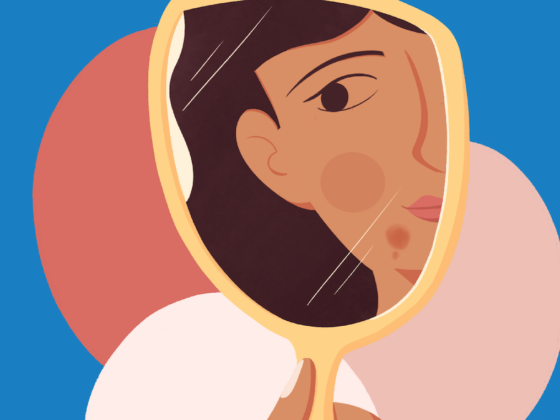If, like me, you had a long period of symptoms before finally deciding on your diagnosis, you certainly thought about the possibility of an allergy at some point. But let's go:
Is there any connection between UCE and allergy?
You certainly have someone in your family who is allergic to dust mites or animal fur... there are so many types of allergies, right?
Did you ever think that your CSU (chronic spontaneous urticaria) was an allergy at first? Maybe a doctor thought so too and ordered some tests, such as the RAST test. Although there are similarities, CSU is not considered an allergy.¹
But what exactly is an allergy?
Allergies occur when the immune system overreacts to different substances that come into contact with the body, whether through breathing, skin or ingestion.² In other words, allergies are directly related to an external triggering factor – which is the opposite of UCE, which is a spontaneous skin condition, as the name suggests.³
You may be wondering: If chronic spontaneous urticaria (CSU) resembles an allergy in appearance and symptoms, why isn't it considered one?
Although the processes are similar, UCE does not have a specific external factor¹ that triggers it.³ – and that changes everything!
When you have an allergy, for example, you can take some actions to avoid exposure/contact with the factors that trigger it. Someone who is allergic to shrimp can avoid and avoid recipes that contain this food. In the UCE, this is different! There are no signs or anything specific to avoid, which can make controlling the symptoms more difficult. And that's exactly what happened to me!¹³⁴
It is common, for example, Some patients are constantly worried about the next attack, faced with the unpredictability of chronic spontaneous urticaria, without knowing exactly what is causing it and how to avoid it, and this all affects patients' social lives and relationships.⁴
What to do then?
It is very important for the patient to realize that after a scan looking for triggering factors, we may be talking about CSU. I myself followed several diets, kept routine diaries in which I wrote about what I ate, how I cleaned the house and how I washed my clothes: all to try to understand a factor that causes this whole thing. In general, this can be very frustrating for the patient and make their journey to find answers very tiring.
Therefore, if you think you have CSU, we recommend that you visit a specialist doctor, whether an allergist or a dermatologist, and talk to them about the symptoms you are experiencing.⁵
Wonderful news that we can be happy about is that A good proportion of people with CSU are able to live without any signs or symptoms of the disease when they receive treatment suitable.⁵
In other words: you can live well again! ³⁴
___________
References:
1: Augey F, Gunera-Saad N, Bensaid B et al. Chronic spontaneous urticaria is not an allergic disease.Eur J Dermatol 2011; 21(3):349-353.
2: REDE D'OR SÃO LUIZ. Allergy. Available at: https://www.rededorsaoluiz.com.br/doencas/alergia. Accessed: Oct. 2024
3: Zuberbier T, Abdul Latiff AH, Abuzakouk M, et al. The international EAACI/GAÇLEN/EuroGuiDerm/APAAACI guideline for the definition, classification, diagnosis, and management of urticaria. Allergies. 2022;77(3):734-766. doi:10.1111/all.15090
4: Maurer M, Abuzakouk M, Bérard F, et al. The burden of chronic spontaneous urticaria is substantial: Realworld evidence from ASSURE-CSU. Allergy.2017
5:Kaplan AP. Therapy of chronic urticaria: a simple, modern approach. Ann Allergy Asthma Immunol.2014 May;112(5):419-25.
Novartis Support
BR-32379



Recent Comments